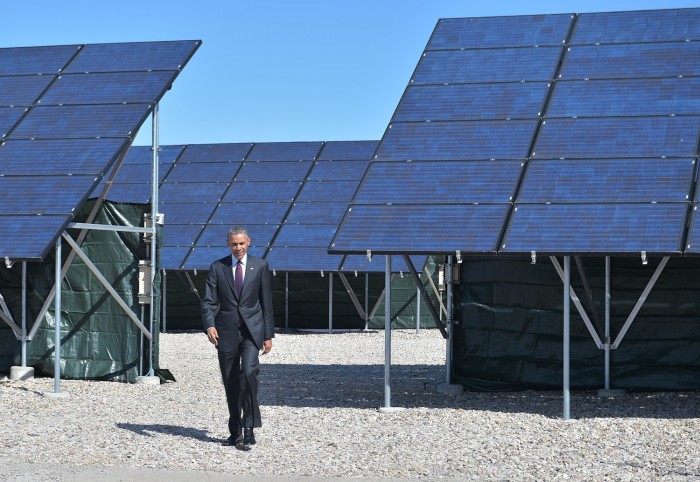Obama’s Ambitious Clean-Energy Goal Will Depend on Nuclear—and the Next President
President Barack Obama, along with Canadian premier Justin Trudeau and Mexican president Enrique Peña Nieto, is expected to announce ambitious new clean-energy goals at the “Three Amigos” summit in Ottawa this week. According to the White House, the three leaders will set a target of generating half of North America’s power from non-carbon-emitting sources by 2025. That is well beyond the emissions reduction targets set by the Paris climate accord, last December.
For Canada, that is not a stretch: the country already gets more than 80 percent of its electricity from clean sources, including hydro, solar, wind, and nuclear. For Mexico and the U.S., however, it will be tougher: Mexico gets about one-quarter of its electricity from clean sources, while the U.S. gets around one-third. Both of those totals include nuclear power—which, unfortunately, is on the decline.
Nuclear plants in the U.S. currently provide about 20 percent of the country’s electricity, but utilities in recent years have closed or announced plans to close several large nuclear plants, including the Diablo Canyon station in California. As many as 20 nuclear plants could be shuttered over the next decade, according to the Nuclear Energy Institute. If that power is replaced by fossil fuels, it would dramatically increase emissions of greenhouse gases. Getting to the target of 50 percent clean energy generation is probably unattainable without significant contributions from nuclear power, but the industry appears to be withering.

Of course, it will be up to the next president, who takes office in seven months, to determine whether we ever attain what the Obama administration admits is a “stretch goal.” Hillary Clinton has announced a sweeping plan for increasing renewable energy if elected, but she has flip-flopped several times over the years on whether nuclear power should be part of the nation’s energy portfolio. Most recently, she says her “Clean Energy Challenge” would include grants to support new nuclear construction.
Donald Trump, meanwhile, has historically said he supports nuclear power, but his “America First” energy plan focuses mainly on increasing fossil-fuel production and loosening environmental regulations. In an hour-long speech in North Dakota last month, billed as presenting his energy policy, he mentioned nuclear only once.
(Read more: Huffington Post, New York Times, “Donald Trump’s ‘America First’ Energy Plans Shows He Knows Virtually Nothing About the Issue”)
Keep Reading
Most Popular
Large language models can do jaw-dropping things. But nobody knows exactly why.
And that's a problem. Figuring it out is one of the biggest scientific puzzles of our time and a crucial step towards controlling more powerful future models.
The problem with plug-in hybrids? Their drivers.
Plug-in hybrids are often sold as a transition to EVs, but new data from Europe shows we’re still underestimating the emissions they produce.
How scientists traced a mysterious covid case back to six toilets
When wastewater surveillance turns into a hunt for a single infected individual, the ethics get tricky.
Google DeepMind’s new generative model makes Super Mario–like games from scratch
Genie learns how to control games by watching hours and hours of video. It could help train next-gen robots too.
Stay connected
Get the latest updates from
MIT Technology Review
Discover special offers, top stories, upcoming events, and more.